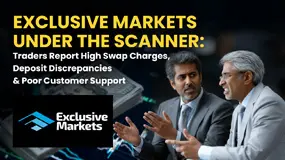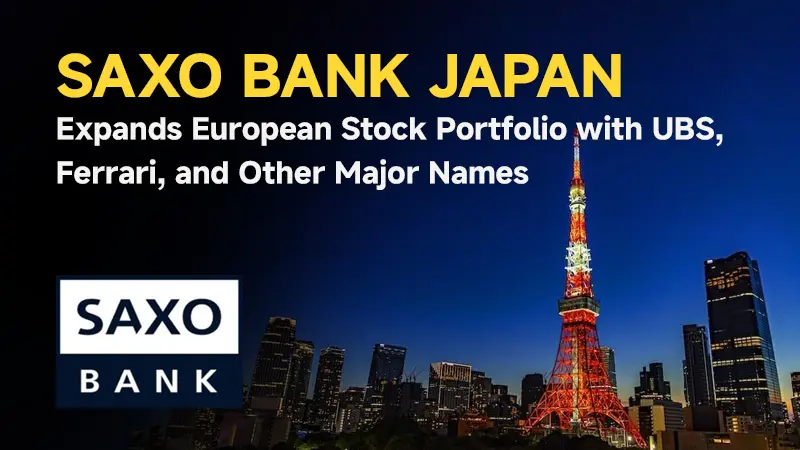简体中文
繁體中文
English
Pусский
日本語
ภาษาไทย
Tiếng Việt
Bahasa Indonesia
Español
हिन्दी
Filippiiniläinen
Français
Deutsch
Português
Türkçe
한국어
العربية
Forex Orders Explained: How They Shape Your Trading Journey
Abstract:Wondering what forex orders mean to your trading experience? You have come to the right place to learn them. Broadly speaking, a forex order is an offer sent by the buyer or seller using the trading platform to open or close a trade. In this article, we will explain different forex orders so that you understand their meaning and significance to your trading journey.

Wondering what forex orders mean to your trading experience? You have come to the right place to learn them. Broadly speaking, a forex order is an offer sent by the buyer or seller using the trading platform to open or close a trade. In this article, we will explain different forex orders so that you understand their meaning and significance to your trading journey.
Different Types of Forex Orders
Market Order
A market order lets you buy or sell currency pairs instantly at the best available price. So, if the EUR/USD‘s bid price and ask price remain 1.2140 and 1.2142, respectively, and you want to buy this currency pair at market, you will get it at 1.2142. Upon clicking on ’buy, your trading platform would execute a buy order at that price. However, please note that varying market conditions can result in a price difference between the price you opted for and the price at which the deal is executed on your trading platform.
Limit Order
A limit order means it will be placed to buy below the market or sell above the market at a specific price. Usually, this order results after the market attains the limit price.
Stop Entry Order
A stop order is about preventing an order from executing until the stop price is reached. Using the stop order is advisable when you intend to buy only after the price rises to the stop price. It can also be used when the price falls to the stop price. A stop entry order is like buying above the market or selling below the market at a specific price. Traders place a buy stop forex order to purchase above the market price. They do it when the market price reaches or goes through the Buy Stop price. Traders place a Sell Stop order to sell after the price reaches a specified level.
Stop Loss Order
It is a close out order as the market price attains a specified level. It could either be a profit or loss for the trader. A stop loss forex order is an order that helps prevent additional losses should the price movement go against your speculation. For instance, for traders in a long position, it remains a sell stop order. On the other hand, for traders in a short position, it remains a buy stop order.
Lets understand this with an example below.
You buy EUR/USD at 1.2230, and you put a stop loss order at 1.2200. As soon as the EUR/USD currency pair falls to 1.2200, your sell order would be automatically executed by the trading platform. This way, you limit your loss to 30 pips.
Trailing Stop
It is a type of stop loss order that remains attached to an open position. It automatically moves upon profit becoming equal to or higher than the specified level. For example, you opt for short USD/JPY at 91.80 with a trailing stop of 20 pips. Originally, your stop loss was at 92.00. If the price falls to 91.60, your trailing stop would fall to 91.80 or breakeven. In case the USD/JPY falls to 91.40, your stop would move to 91.60 or lock in a profit of 20 pips. Your trade will remain open until the price movement is not against you by 20 pips. As the market attains the trailing stop price, your position will be closed at the best available price.
Time-in-Force Orders
These forex orders are special instructions specifying a broker or the trading platform about the time for which an order should remain active before getting cancelled in the event of non-execution. As a trader, you gain enhanced control over trade timing and execution. Some common Time-in-Force forex order types include -
- Good for the Day (GFD) Order
- Good Till Cancelled (GTC) Order
- Immediate or Cancel (IOC) Order
- Fill or Kill (FOK)
- Good Till Date (GTD)
Conclusion
Understanding different types of forex orders is crucial for building a strong trading foundation. Each order, whether its a market order, limit order, stop loss, or time-in-force order, serves a unique purpose in helping you control risk, manage profits, and execute trades strategically.
Ready to take your forex journey to the next level? Join WikiFX Masterminds and discover game-changing strategies with a community of passionate traders.
Follow these easy steps to join the community.
1. Scan the QR code placed right at the bottom.
2. Download the WikiFX Pro app.
3. Afterward, tap the ‘Scan’ icon placed at the top right corner
4. Scan the code again.
5. Congratulations on becoming a community member.

Disclaimer:
The views in this article only represent the author's personal views, and do not constitute investment advice on this platform. This platform does not guarantee the accuracy, completeness and timeliness of the information in the article, and will not be liable for any loss caused by the use of or reliance on the information in the article.
Read more

JP Markets Review: High Spread & Commission, Fake Bonus Lure & Withdrawal Hassles Frustrate Traders
Have you been lured into opening a JP Markets Forex Trading Account with a high bonus offer that never existed? Have you found the spread and commission charges higher on JP Markets Login than what’s advertised on the broker’s website? Wondering why you are not able to withdraw funds from your trading account? Well, all of these hint at a potential forex investment scam. Many traders have expressed their disappointment while sharing the JP Markets Review online. In this article, we have shared certain complaints. Take a look at them.

Exclusive Markets Under the Scanner: Traders Report High Swap Charges, Deposit Discrepancies & More
Is your forex trading account experience at Exclusive Markets far from good? Do you witness high swap fees and daily charges? Does the deposit fail to reflect in your Exclusive Markets Login? Don’t receive adequate response from the customer support official on your trading queries? You are not alone! Traders have already alleged that the forex broker is involved in these activities. In this Exclusive Markets WikiFX review article, we shared some traders’ comments. Read on to know about them.

Is Amillex Safe or a Scam? Understanding Rules and Security
You are asking an important question: Is Amillex safe or a scam? The simple answer is that Amillex works in an unclear area that needs careful study. It is not a complete scam like fake websites that steal your money right away, but it also does not meet the safety rules of the best, well-regulated brokers. Read on to explore more details.

Saxo Bank Japan Expands European Stock Portfolio with UBS, Ferrari, and Other Major Names
Saxo Bank Japan is broadening its investment offerings by adding over 100 European stocks from Denmark, Italy, Spain, and Switzerland. The expansion—set to launch on November 5, 2025—includes globally recognized companies such as UBS, Ferrari, Novo Nordisk, and Nestlé. This initiative enhances Saxo Bank Japan’s already extensive global stock lineup, aiming to support investors seeking diversification into leading European industries.
WikiFX Broker
Latest News
Latest FCA Daily Alerts and Consumer Warnings for 2025
Webull Widens Crypto Futures with Coinbase Derivatives
Is Nash Markets Regulated or Risk? Truth About Nash Markets’ License & Withdrawal Issues
Angel one 2025 Review & Complaints
Exclusive Markets Under the Scanner: Traders Report High Swap Charges, Deposit Discrepancies & More
CySEC Blocks Certification Access to Combat Advisor Impersonation
Annual Sales Of New Vehicles Expected To Hit Only 15.7 Million Units: Cox
Saxo Bank Japan Expands European Stock Portfolio with UBS, Ferrari, and Other Major Names
Amillex Broker Affiliate Program: A Complete Guide to Earning with Referrals
New SC Rules Take Effect in November 2025: What’s Next for Finfluencers?
Currency Calculator



